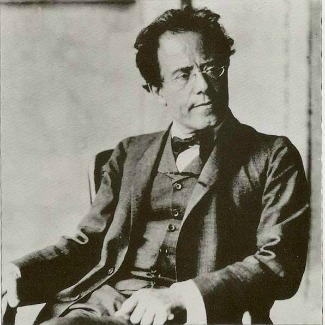New tools to analyze the music of Gustav Mahler

This tesis presents a new way to interpret and classify, thanks to music semiotics, Gustav Mahler's orchestral songs on Des Knaben Wunderhorn. These songs and the four first symphonies belong arguably to one and the same part of Mahler's work, corresponding to the years 1888-1901. The song analyses, which constitute the basic material of the present study, are presented in the Third Part of the thesis. Methodologically, they follow the music semiotics school of Julius A. Greimas, especially Márta Grabócz's and Raymond Monelle's topical analysis. The latter supervised this thesis until his decease in march 2010.
The analyses' results are organized according to a Semiotic Square that Greimas redesigned, in the 1960s. This structural representation, however, was not a starting point, but a result of the work: the Greimas Square seeemed to suggest itself to the study's final classification. At first, the musical meanings were distributed in drawers and cupboards, or rather, into four different collective categories called isotopies. Later on, this system revealed its capacity not only to classify and gather every single musical meaning found in the analyses, but also the represent the interrelations between those four big cupboards – the isotopies. The whole configures a structural map that represents the world evoked by Mahler's Wunderhorn music.
Among the topics, or recurrent musical meanings, not described before, the musical laughter and the pastoral march stand out. The former was recognised internationally in a recent congress in Finland, where it was presented for the first time. The pastoral march has a massive presence in the early work Mahler's. It can be considered an idiomatic trait of his style. In the corresponding chapters, causes and consequences of both topics are discussed, not only in the orchestral songs, but also within the first four symphonies, with which they share very tight bounds.
References
"Mahler's Wunderhorn Music: A Preliminary Interpretive Research on the Semantic Layer. In: Music, Senses, Body". Joan Grimalt. Actes del Ninth International Congress On Musical Signification, 19-23/09/2006, Università di Roma Tor Vergata. Publicat a Helsinki 2008.
"Is the Laughter a Musical Topic?". Joan Grimalt. Actes del Ninth World Congress of the International Association for Semiotic Studies, juny 2007, Helsinki-Imatra.
"Com escoltar música? Una història de la música en audicions". Joan Grimalt. Ed. Duxelm: Barcelona 2007. Publicat amb la col·laboració de la UIC i de l'Idec de la UPF.


